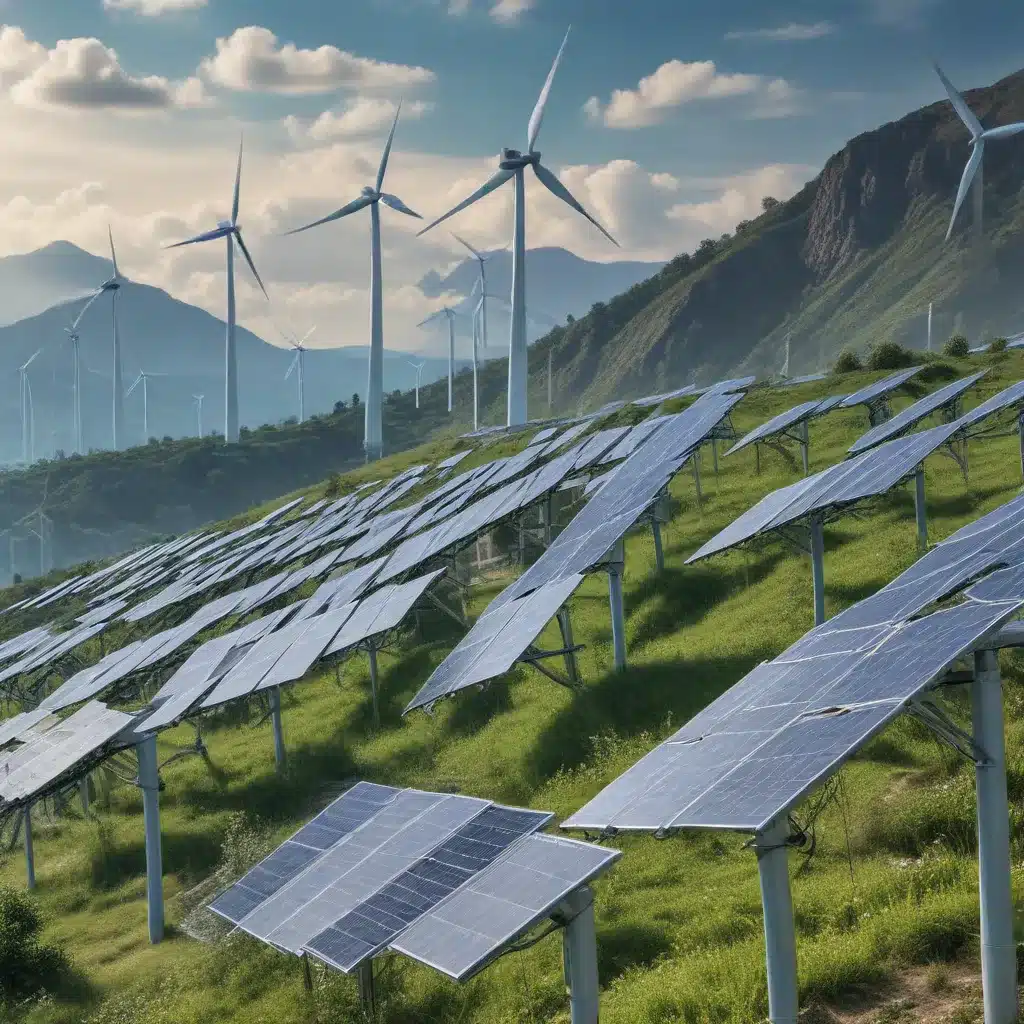
Advancing Renewable Energy through Blockchain Technology: Opportunities and Challenges
The relentless march of climate change and dwindling fossil fuel reserves have made the transition to sustainable energy alternatives an urgent global imperative. As Europe strives to lead the charge towards a greener future, innovative technologies like blockchain hold immense promise in catalyzing the shift to renewable energy sources.
Renewable Energy Landscape
The European continent has made remarkable strides in harnessing the power of wind, solar, and hydrogen. Wind energy capacity has surged, with nations like Germany, Spain, and the UK leading the charge. Similarly, solar photovoltaic installations have proliferated, driven by plummeting costs and supportive policy frameworks. Furthermore, the European Union has set ambitious targets for hydrogen production and integration, recognizing its potential as a clean energy carrier.
Yet, the path to a sustainable energy future is paved with challenges. The intermittency of renewable sources and the need for robust grid integration and energy storage solutions remain critical obstacles. Overcoming these hurdles will require a multifaceted approach, leveraging both technological advancements and progressive policy changes.
Blockchain Applications in Renewable Energy
This is where blockchain technology emerges as a game-changer. By enabling secure, transparent, and decentralized record-keeping, blockchain can enhance the efficiency and traceability of renewable energy systems.
One of the primary applications of blockchain in the energy sector is the facilitation of peer-to-peer energy trading. This allows renewable energy producers, such as homeowners with solar panels, to sell their excess generation directly to neighboring consumers, bypassing traditional utility intermediaries. Smart contracts on the blockchain automate these transactions, ensuring fairness and transparency.
Moreover, blockchain can revolutionize the tracking and certification of renewable energy. Renewable Energy Certificates (RECs), which verify the origin of clean energy, have historically suffered from cumbersome paperwork and a lack of transparency. Blockchain-based REC platforms can streamline this process, providing a clear, auditable record of renewable energy production and consumption.
Opportunities for Renewable Energy through Blockchain
The integration of blockchain technology opens up a world of possibilities for the renewable energy sector. By enhancing the efficiency and transparency of energy systems, blockchain can accelerate the adoption of sustainable energy sources and support the transition to a decarbonized economy.
For instance, blockchain-enabled decentralized energy trading networks can help mitigate the intermittency challenge of renewables. When a solar panel owner generates excess energy, they can seamlessly sell it to neighboring buildings through smart contracts on the blockchain. This peer-to-peer energy sharing can minimize waste and optimize the utilization of renewable resources.
Furthermore, blockchain can facilitate the integration of distributed energy resources, such as rooftop solar, small wind turbines, and energy storage systems, into the grid. By enabling the real-time tracking and coordination of these decentralized assets, blockchain can enhance grid resilience and support the incorporation of renewable energy sources.
Blockchain-Enabled Renewable Energy Transactions
The potential of blockchain in the renewable energy sector extends beyond just facilitating peer-to-peer trading and certificate tracking. The technology can also enable more sophisticated energy transactions and management strategies.
Smart contracts, embedded within the blockchain, can automate various energy-related processes, such as power purchase agreements, energy balancing, and carbon credit trading. These self-executing agreements can streamline complex transactions, reduce administrative overhead, and ensure the integrity of energy transactions.
Moreover, blockchain-based platforms can enable the aggregation of distributed energy resources into virtual power plants. By coordinating the collective energy generation, storage, and consumption of these decentralized assets, blockchain can optimize the utilization of renewable sources and enhance grid stability.
Challenges in Adopting Blockchain for Renewable Energy
While the promise of blockchain in the renewable energy sector is immense, the technology is not without its challenges. One of the primary concerns is the scalability of blockchain networks. As the number of transactions increases, the network’s processing speed and transaction costs can become a bottleneck, limiting the efficiency and cost-effectiveness of blockchain-based energy applications.
Additionally, the regulatory landscape around blockchain and energy trading remains complex and evolving. Policymakers must develop clear guidelines and frameworks to ensure the seamless integration of blockchain-based energy systems with existing regulations and market structures.
Interoperability between different blockchain platforms and their integration with legacy energy infrastructure also pose significant hurdles. Standardization and interoperability protocols are essential to enable the seamless exchange of data and transactions across diverse energy systems.
Integrating Blockchain with Renewable Energy Infrastructure
To fully harness the potential of blockchain in the renewable energy sector, a holistic approach to integration is required. This involves aligning blockchain-based solutions with the broader modernization of energy grids and the deployment of smart grid technologies.
By leveraging blockchain’s capabilities in data management, automation, and decentralization, energy systems can achieve greater efficiency, resilience, and responsiveness. Smart contracts on the blockchain can automate functions like demand response, energy balancing, and grid ancillary services, optimizing the integration of renewable sources.
Furthermore, the combination of blockchain and distributed energy resources can empower consumers to play a more active role in the energy ecosystem. Blockchain-enabled microgrid systems can enable local energy communities to generate, store, and trade renewable energy, fostering energy independence and resilience.
The European Future Energy Forum has been at the forefront of driving the synergies between blockchain and renewable energy. Through thought-leadership, policy advocacy, and collaborative initiatives, the forum has been instrumental in shaping the future of sustainable energy in Europe.
As the world accelerates its transition to a low-carbon future, the integration of blockchain technology with renewable energy infrastructure holds immense promise. By enhancing the efficiency, transparency, and resilience of energy systems, this transformative technology can unlock new pathways towards a sustainable and prosperous energy landscape.







